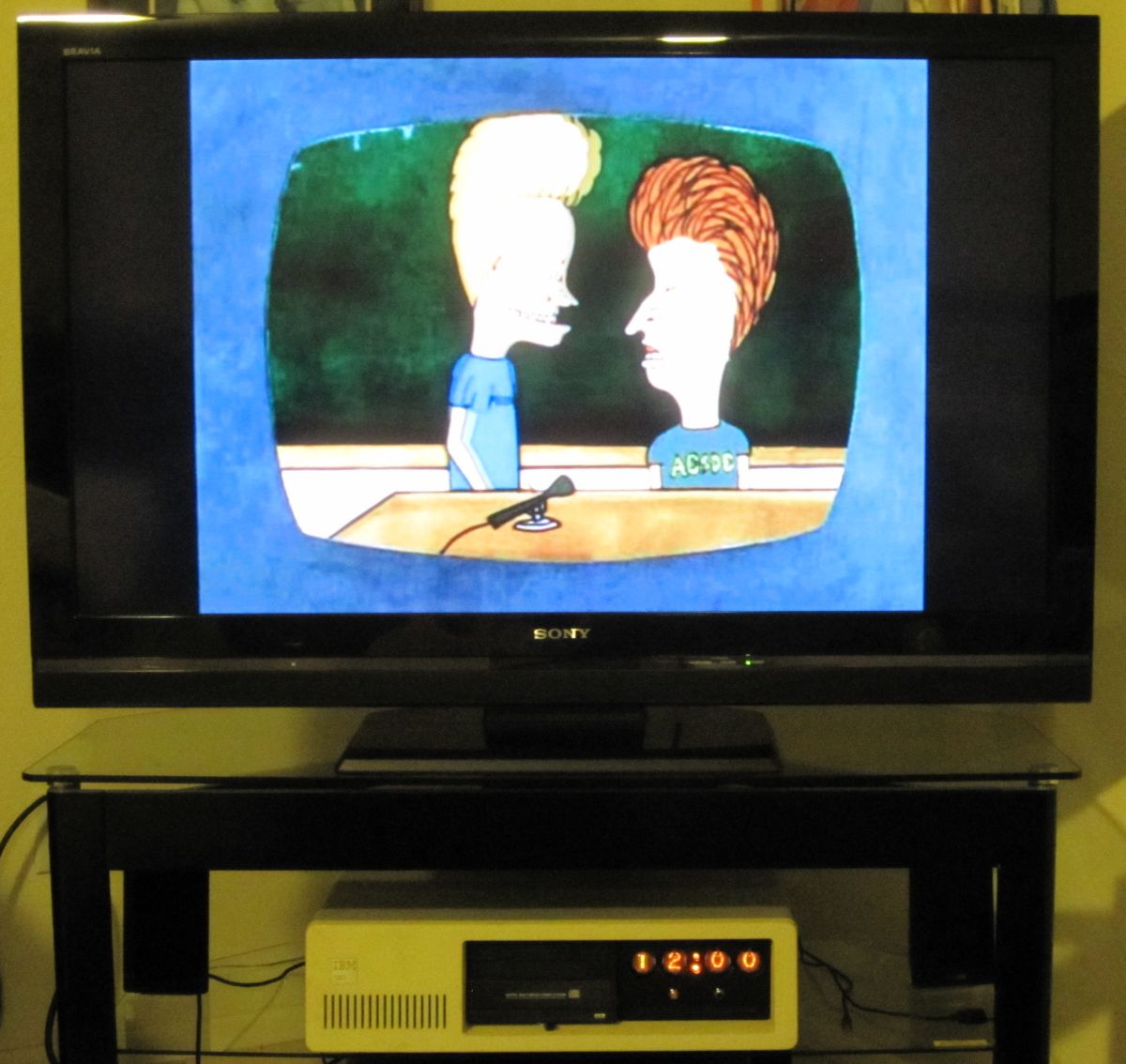IBM Personal Computer
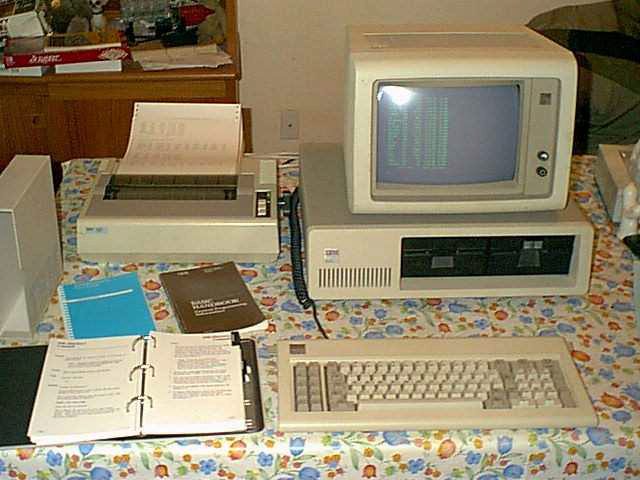
The IBM 5150 Personal Computer features an 8088 Intel processor, 256k of memory on the motherboard, and a monochrome display adapter driving a 5151 green/black monitor. It has two full height IBM 5.25" 360k floppy drives, and no hard drive. I have an original IBM DOS version 1.10 with it, which runs from one 160K floppy disk. The original IBM 5152 printer is an Epson MX-80 with the IBM label. This whole setup would have cost you around $4000 back in 1983.
Tandon TM100 floppy disk drive jumper settings
PC and XT Motherboard Switch settings
IBM Personal Computer XT
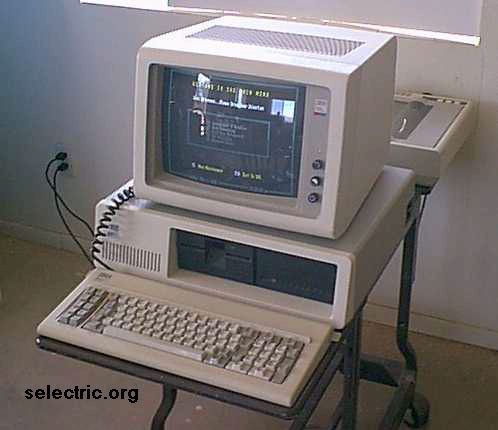
This 5160 Personal Computer XT (eXTended) came equipped from IBM with lots of good stuff, including 256k RAM on the motherboard, plus a 256k RAM expansion card (with "flipchip" IBM 64k x 8 chips), an asynchronous communications port, one 5.25" full height IBM 360k floppy drive, a 10m IBM (Seagate ST-506)) hard drive, and a Color Graphics Adapter driving an IBM 5153 color monitor, plus the Monochrome Display Adapter, which also drives the printer. I have the original IBM Guide to Operations, which includes the diagnostics disk, and a cool "getting to know your IBM PC" educational disk. This one has IBM DOS 2.10 (1984) loaded on the hard drive.; This computer does NOT have a real time clock, you must enter the time and date every time you boot it up. I have an AST Six Pack Plus memory/clock/comm/gameport board, with the software and manual, but I don't want to put any non-IBM cards in this computer, as it is just too original to mess with.
Some differences between the PC and XT include the type of power supply originally included--63 vs 135 watts; the number and spacing of expansion slots--5 vs 8; the PC has a cassette tape interface connector on the back, if you couldn't afford to order the floppy with it...drives were expensive back in August, 1981, when it was introduced. The XT came standard with the 10m drive, but it cost close to $6000 (configured like this one) when introduced in 1983. I bought the XT computer used 15 years later for $8.
IBM PC XT case Pentium 4 Media Center
We finally found a lame excuse to make a media center computer, so I hacked up an extra XT case to fit a modern Micro ATX type motherboard and standard ATX power supply.
Now we can watch Beavis and Butthead over netflix, on the big screen!
Hot Rodded IBM XT Model 286
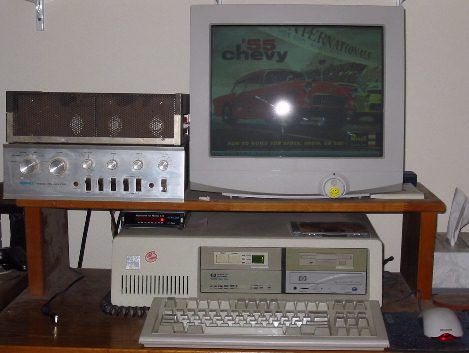
This is the computer I'm using to make this web page...a slightly modified IBM PC XT Model 286 (5162). The original motherboard was missing when I got the computer from the thrift store, so I installed a PC Chips M755LMR board, with an Intel 1 gHz Pentium III processor. It has 128 Mb of ram (as opposed to 256Kb on the original), along with 1 Mb of cache. Other features include a Maxtor 40gb ATA-133 hard drive, 3.5" floppy drive, 8X/4X/32X CD-R/RW drive, onboard sound, external 33.6kbps modem, a 2Mb Trident PCI video card, and a PCI network card. The new motherboard fit just fine, because it is just a bit shorter than the XT board, and the XT/286 157 watt power supply seems to have plenty of power. I like the small IBM keyboard, which is early 90s vintage (an option on the PS/2 computers), and has no numerical keypad to get in the way of the mouse. The operating system is Windows 2000.; You can see that it's a sort of tight fit inside.
IBM Personal Computer AT
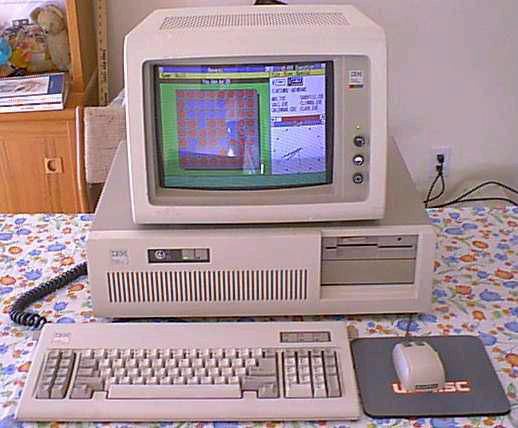
This is an IBM PC AT (Advanced Technology) Model 5170 computer. It was at the thrift store, and apparently came from the University of Arizona Optical Sciences department (where my brothers worked around 1980). It has an IBM EGA video card, here set to work with the standard IBM 5153 Color Display. I finally found an original IBM 5154 Enhanced Color Display for it, not pictured here. The computer has an 8 mHz 80286 processor, running at 6 mHz, and the full capacity of 512 kbytes of memory on the motherboard. It also has an IBM 30 mb hard disk, and the original 5.25 high density floppy drive. Note that the original cover is still there for the optional floppy drive, usually the cover was thrown away when a 3.5 drive was added. There is the original IBM disk drive controller board inside, this is an extra tall full length board, as it controls both the floppy and hard drives. There is also a Paradise I/O board, with one 9 pin RS-232 port and one parallel port. I added some extra RAM on two BocaRam AT boards, including 128k of conventional, and 3 Mb of extended memory. It has the original DOS 3.30 on it, and I added Windows 1.01 just for fun.
